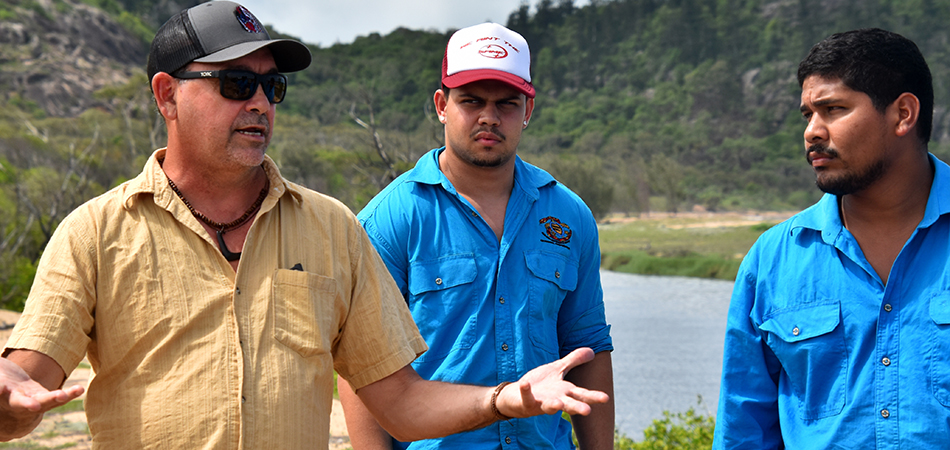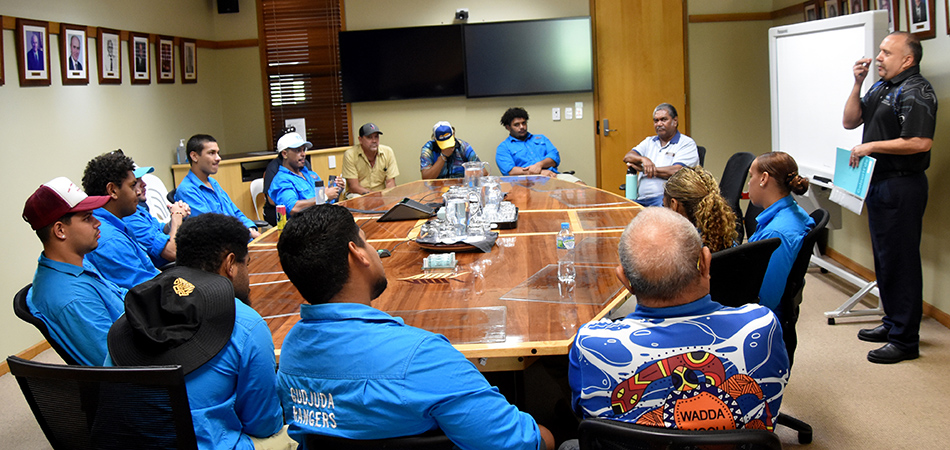Working together to reap the benefits of cultural burning
NQ Dry Tropics’ Cultural Fire Management for Grazing Landscapes project is demonstrating how cultural fire can improve the health and productivity of grazing land by controlling invasive weeds and bringing back native pastures.
The two-year initiative, funded through WWF-Australia’s Indigenous Fire Management Program, has been designed to integrate cultural heritage considerations and fire management with local Traditional Owner groups.
Activities are aimed to protect and conserve cultural heritage values and provide an improved understanding of the role of fire in the landscape.
The project is being delivered in partnership between Traditional Owners of the Burdekin Dry Tropics region, WWF-Australia, Firesticks Alliance, and graziers.
Initial results from a trial being carried out on Belemahar, a grazing property south of Townsville shows the ecological benefits of cultural fire.
As NQ Dry Tropics’ Marc McConnel explains in this video, cultural fire is an important tool for land managers to reduce wildfire risks, suppress and manage weeds, promote plant species and improve biodiversity.
He said it was important to involve cultural fire experts to achieve good results.
NQ Dry Tropics’ Marc McConnell explains what Cultural Fire under the auspices of the Firesticks Alliance has achieved on Belemahar.
|
|
This is a cool fire burning lantana crawling up the tree to the canopy. If you look closely, the trunk of the tree is not burning. This is an appropriately timed fire. Imagine the difference if it were a hot fire. In the video above, about eight months after the fire, you can see how well the tree and surrounding vegetation has responded. |
Understanding fire from two perspectives proves important to Trinity in his role
NQ Dry Tropics Cultural Fire Management Project Officer Trinity Georgetown is keen to understand the way fire is controlled, implemented and regarded on both sides of a fence he straddles every day.
Trinity is from Lama Lama Country centred on Princess Charlotte Bay where he worked as a Lama Lama Ranger. Trinity is eager to develop his knowledge and skills as a fire practitioner to be able to supervise and conduct cultural burns.
Since taking up his role with the WWF-Australia funded Cultural Fire Management Project, Trinity and Traditional Owners in the region have been mentored by Victor Steffensen and the Firesticks Alliance team of Fire Practitioners.
At the invitation of Firesticks Alliance, Trinity recently completed a four-day course conducted by national training organisation FireGround. He is now qualified to take on a team leader role with his brigade, Gudjuda Rural Fire Service based at Home Hill.
The course was specifically designed for cultural fire practitioners and gave them the opportunity to compare language, techniques and procedures.
Trinity said some of the obvious differences were interesting.
“RFS does a hazard reduction burn from the perimeter to the centre to lower the risk of a fire getting out of control. The fire burns to the centre, then consumes itself,” he said.
“In a cultural fire, we burn in spots in a mosaic fashion, usually from the centre out to make sure wildlife has a way to escape.”
He said cultural fire practitioners, using knowledge passed on through generations, tested for moisture by touch, whereas Rural Fire Service (RFS) officers used the Keetch Byram Drought Index, a scale from zero to 200.
A completely saturated soil would return a “zero” result whereas soils with a KBDI approaching 200 would be those that had been in drought conditions for an extended period. The higher the KBDI, the riskier the burn.
Cultural fire practitioners can read Country, assess the need and purpose of a cultural burn.
An RFS team leader assesses an area based on risk and mitigation of risk.
NQ Dry Tropics Partnerships Coordinator Karen Vidler said capacity building for Trinity and the region’s Traditional Owners was a big part of the project and this was being provided in partnership with Firesticks Alliance.
“Feedback after each workshop is really positive and interest levels in the project are growing, from Traditional Owners, Rural Fire Services, and Queensland Parks and Wildlife as well as graziers throughout the region,” she said.
Trinity said it was invaluable getting insight into the two different perspectives and helped develop a more rounded understanding of fire.

Pictured, from left, are: Russel Wall from FireGround , Trinity Georgetown, Germaine Paulson from SE Queensland, Koorin Campbell from Cairns , Michael Smith from Bunya Mountains, Leeton Lee from Mt Tamborine, Richard Shadforth from FireGround and Jesse Williams from Tasmania.

Riwha Walden (centre) and Bryson Martin-Savage learn from Firesticks Lead Fire Practitioner, Victor Steffensen (left).
We’re proud to partner with Gudjuda to revive ancient land management skills
NQ Dry Tropics is proud to work in partnership with Gudjuda Aboriginal Corporation to reinvigorate Traditional land management skills for the next generation of Gudjuda Rangers.
We recently supported a Cultural Fire workshop, which included 10 Gudjuda (Skilling Queenslanders for Work) trainees visiting the Australian Institute of Marine Science (AIMS) headquarters, on Bindal Country south of Townsville.
Gudjuda has been working in partnership with AIMS, looking to reintroduce fire back to the property.
They checked potential locations for future Cultural burns alongside Firesticks Lead Fire Practitioner Victor Steffensen.
The trainees walked Country with Senior Ranger Eddie Smallwood and Victor, and had the opportunity to learn about the many types of vegetation on site, some of which had medicinal and other properties.
Victor provided detailed insights on how Elders would have used and cared for this Country and the types of fire that should be used according to the Country type and its condition.
Several Gudjuda Rangers and Birriah Traditional Owners attended.
All the trainees and participants talked not only of how much they had learned, but also the good feeling of being there and reading the Country with Elders and Traditional Knowledge experts. They agreed there was still a lot more to learn.
AIMS Indigenous Partnerships hosted the group.

AIMS Indigenous Partnerships Coordinator Carl Grant briefed the group at AIMS headquarters before walking Country.
